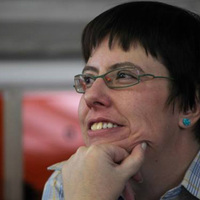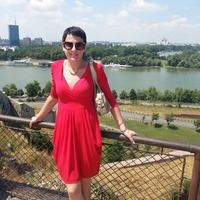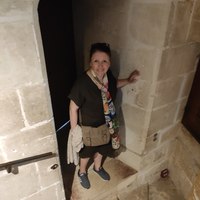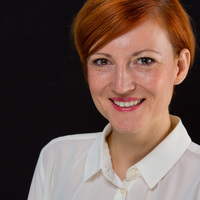Razmjena umjetničkih iskustava u jadranskome bazenu. Zbornik radova znanstvenog skupa „Dani Cvita Fiskovića“ održanog 2014. godine, edd. Jasenka Gudelj - Predrag Marković, Zagreb, 2016.
Sin dagli inizi dello studio dell’opera scultorea di Niccolò di Giovanni Fiorentino è stata indiv... more Sin dagli inizi dello studio dell’opera scultorea di Niccolò di Giovanni Fiorentino è stata individuata l’origine donatelliana di alcune sue soluzioni e gia` gli autori come Adolfo Venturi hanno proposto una sua formazione presso Donatello. In seguito quest’ipotesi è stata accettata e la maggior parte degli studiosi è rimasta fedele all’idea venturiana che Niccolò si era formato a Padova. Rimane invece difficile da accettare l’ipotesi sulla sua attività a Venezia prima dell’arrivo in Dalmazia. Il documento del 1462, di recente pubblicazione, che menziona un artista di nome Niccolò di Ser Giovanni da Tigule, non né è una prova inconfutabile data la difficile identificazione con il nostro maestro. D’altro lato, l’ipotesi che la formazione di Niccolò di Giovanni dovrebbe essere maggiormente collegata con la sua natia Firenze e con la tarda attività di Donatello, finora non ha avuto un riscontro significativo. Invece, la dettagliata analisi dell’opera scultorea di Niccolò (come è stato fatto per le sue opere architettoniche), porta alla conclusione che non è possibile spiegare alcuni elementi senza una buona conoscenza dell’opera donatelliana più tarda. Alcune sue opere suggeriscono anche che Niccolò di Giovanni conoscesse bene le opere della generazione più giovane, come quelle di Luca e Andrea della Robbia, Antonio Rossellino, Desiderio da Settignano e altri. Quindi, al momento del suo arrivo in Dalmazia, negli anni Sessanta del Quattrocento, lui avrebbe portato con se la conoscenza delle opere più recenti del secondo Quattrocento fiorentino. Questo sarebbe visibile, come già riconosciuto dalla critica, nelle opere come il San Sebastiano a Traù o gli angeli della custodia di Sebenico, mentre qui gli elementi che suggeriscono questa ipotesi si identificano in particolare sui suoi rilievi delle Madonne col Bambino. Si tratta di alcuni concetti compositivi, ma specialmente del trattamento delle figure, molto più graziose di quelle di Donatello. Visibili nella maggior parte dei casi (Lesina/Hvar, Orebić, Madrid), questi elementi diventano più avvertibili sul rilievo di Sant’Agata Feltria, di recente scoperto e attribuito a Niccolò di Giovanni Fiorentino. Una caratteristica finora non notata è la testa della Madonna senza velo, sostituito da un intreccio sui cappelli, che la inserisce tra le rare Madonne di Gregorio di Lorenzo, Desiderio da Settignano, Matteo Civitali e Antonio Rossellino (per esempio la Madonna di San Clemente di Sociana a Reggello).









Uploads
Papers by samo stefanac
When Adolflo Venturi wrote on the 15th century sculpture in Dalmatia (1908), he noticed the donatellesque character of Niccolò di Giovanni Fiorentino’s sculptural works and attempted to identify the artist with Niccolò Coccari da Firenze, Donatello’s collaborator at his high altar in the basilica of S. Anthony in Padua. Many scholars in the years to follow accepted Venturi’s identification for granted. However, based on the documents related to the payments of the stones carved by Coccari (1443–1449), we can assume that he was an able stonemason, but there is no evidence that he was either sculptor or architect and neither is there any indication that he was actually trained in Donatello’s
workshop. Apart from this, a more recent discovery of a document that proves that his father’s name was Antonio (A. Sartori), discards this identification by itself. Nevertheless, it is possible to follow Niccolò Coccari’s career into the 1450s. A certain Niccolò di Antonio da Firenze is mentioned among the stonemasons working on the base of the monument to Borso d’Este in Ferrara. Interestingly enough, some attempts were made to identify this master with Niccolò dell’Arca (I. B. Supino), but since he worked together with his partner Meo, who is also mentioned in Padua, there is little doubt that the stonemason mentioned in the document is actually Niccolò Coccari.
Istria had a more provincial character and did not boast fairly prominent local workshops; its artistic development was marked by the role of Venetian masters from the circle of Pietro Lombardo who brought new forms to the region. Such is the case of the Cathedral in Osor, one of the first buildings modelled on Mauro Codussi’s Venetian church of S. Michele in Isola. The study concludes with a brief excursion into central, “Habsburg” Istria, where the new Renaissance forms mixed with late Gothic architectural principles from the north and owing to the master Peter Bezlaj penetrated even central Slovenia.
When Adolflo Venturi wrote on the 15th century sculpture in Dalmatia (1908), he noticed the donatellesque character of Niccolò di Giovanni Fiorentino’s sculptural works and attempted to identify the artist with Niccolò Coccari da Firenze, Donatello’s collaborator at his high altar in the basilica of S. Anthony in Padua. Many scholars in the years to follow accepted Venturi’s identification for granted. However, based on the documents related to the payments of the stones carved by Coccari (1443–1449), we can assume that he was an able stonemason, but there is no evidence that he was either sculptor or architect and neither is there any indication that he was actually trained in Donatello’s
workshop. Apart from this, a more recent discovery of a document that proves that his father’s name was Antonio (A. Sartori), discards this identification by itself. Nevertheless, it is possible to follow Niccolò Coccari’s career into the 1450s. A certain Niccolò di Antonio da Firenze is mentioned among the stonemasons working on the base of the monument to Borso d’Este in Ferrara. Interestingly enough, some attempts were made to identify this master with Niccolò dell’Arca (I. B. Supino), but since he worked together with his partner Meo, who is also mentioned in Padua, there is little doubt that the stonemason mentioned in the document is actually Niccolò Coccari.
Istria had a more provincial character and did not boast fairly prominent local workshops; its artistic development was marked by the role of Venetian masters from the circle of Pietro Lombardo who brought new forms to the region. Such is the case of the Cathedral in Osor, one of the first buildings modelled on Mauro Codussi’s Venetian church of S. Michele in Isola. The study concludes with a brief excursion into central, “Habsburg” Istria, where the new Renaissance forms mixed with late Gothic architectural principles from the north and owing to the master Peter Bezlaj penetrated even central Slovenia.